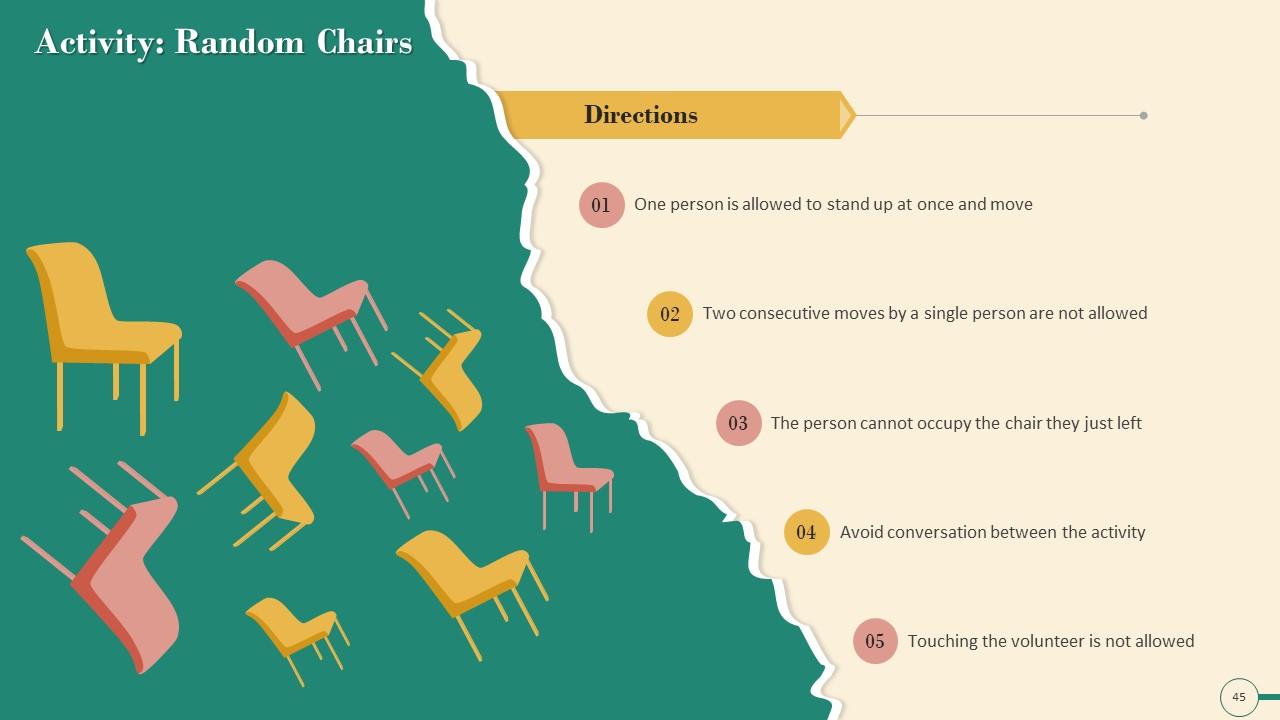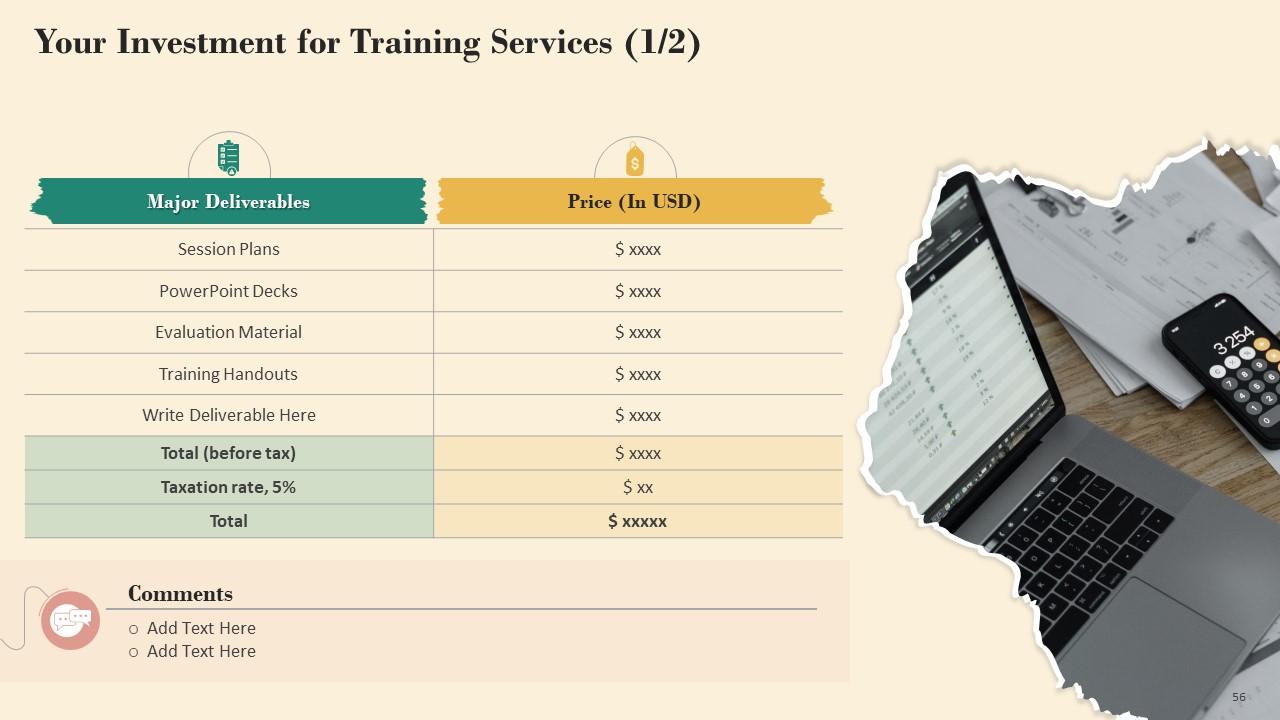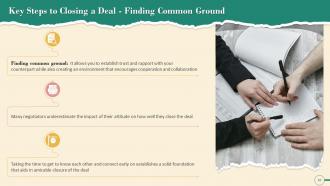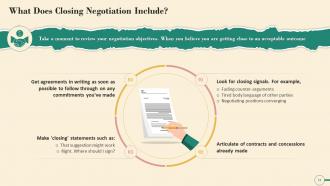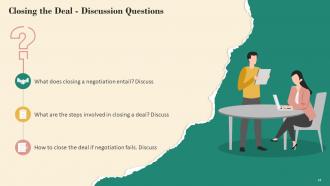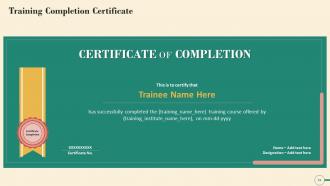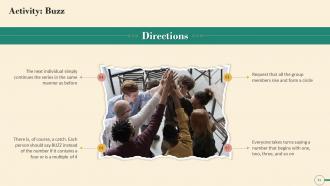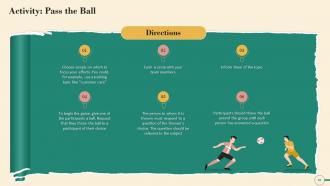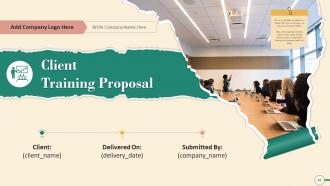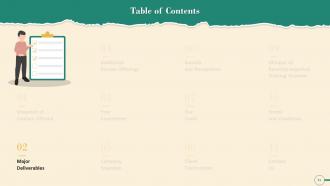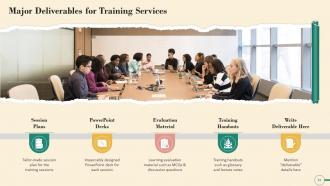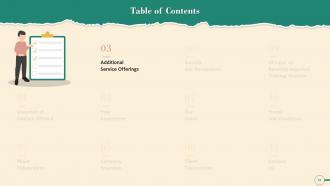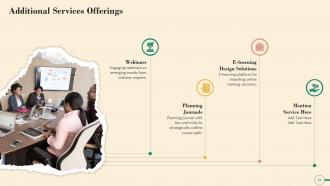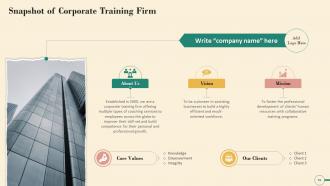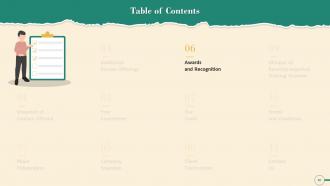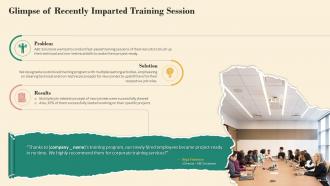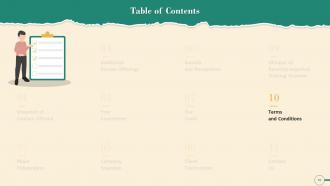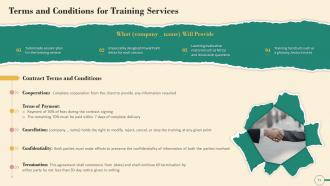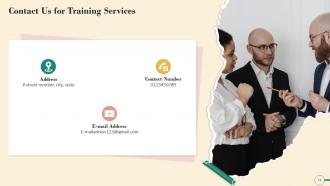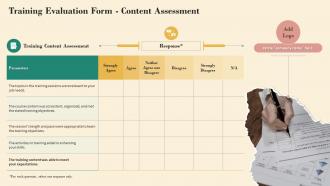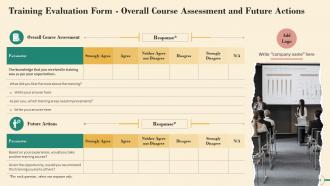Strategies For Closing The Deal In Negotiation Training Ppt
This training module on Strategies for Closing the Deal in Negotiation, in-detail covers the topics Key Steps to Closing a Deal Creating a Deadline, Setting Limits, Finding Common Ground, Brainstorming Creative Solutions, and Testing and Summarizing Communication, What to Do Post Negotiation, What Does Closing Negotiation Include, and Closing Deals When Negotiation Fails. It also has Key Takeaways and Discussion Questions related to the topic to make the coaching session more interactive. The deck has PPT slides on About Us, Vision, Mission, Goal, 30-60-90 Days Plan, Timeline, Roadmap, Training Completion Certificate, and Energizer Activities. It also includes a Client Proposal and Assessment Form for training evaluation.
You must be logged in to download this presentation.
 Impress your
Impress your audience
Editable
of Time
PowerPoint presentation slides
Presenting Training Deck on Strategies for Closing the Deal in Negotiation. This presentation deck contains 76 well-researched and uniquely designed slides. These slides are 100 percent made in PowerPoint and are compatible with all screen types and monitors. They also support Google Slides. Premium Customer Support available. Suitable for use by managers, employees, and organizations. These slides are easily customizable. You can edit the color, text, icon, and font size to suit your requirements.
People who downloaded this PowerPoint presentation also viewed the following :
Content of this Powerpoint Presentation
Slide 5
This slide explains the concept of Closing the Deal in negotiation. It highlights that the stage at which all negotiations reach an agreement is called "closing a deal". A small amount of effort at this stage results in the desired negotiation outcomes.
Slide 6
This slide depicts the key steps to Closing a Deal. The steps are: Setting a deadline, setting limits, finding common ground, brainstorming creative solutions, testing, and summarizing your communication.
Slide 7
This slide depicts Creating a Deadline as a first step to closing a deal in negotiation. Setting a deadline can be an excellent way to close a deal and avoid discussions. Deadlines affect everyone equally, and the other party will feel the same pressure. Making concessions frequently sparks cooperation, which can aid in closing the deal. It also emphasizes that imposing a time limit on the negotiation encourages both parties to think creatively and problem solve.
Slide 8
This slide highlights Setting Limits as the critical step to closing a deal in negotiation. While entering into a negotiation, always have a goal or Target Point (TP) and a limit or resistance point (RP). Between these two points is the bargaining zone you can reach an agreement. It also mentions that if you recognize early on that your bargaining zones do not overlap and that there is no Zone of Possible Agreement (ZOPA), you will walk away. If they overlap and there is a ZOPA, you will identify it early on and move the discussion forward more quickly and effectively.
Slide 9
This slide depicts Finding Common Grounds as a critical step to closing a deal in negotiation. It states that finding common ground early in the negotiation process allows you to build trust and rapport with your counterpart while also creating an environment that encourages cooperation and collaboration. It emphasizes that spending time getting to know each other and connecting early on establishes a solid foundation that aids in amicably closing the deal.
Slide 10
This slide depicts Brainstorming Creative Solutions to close a deal in negotiation. It mentions brainstorming and thinking creatively while working on a solution. This allows to separate the problem from the people and devise an acceptable solution for both parties. It also emphasizes that by making the solution feel shared and fair, ownership is removed from the equation, and neither party feels they have lost anything by closing the deal.
Slide 11
This slide depicts importance of testing and summarizing communication to close a deal in negotiation. It emphasizes that a lack of clarity and communication among the negotiating parties is frequently an impediment to reaching an agreement. It also mentions that constantly assessing whether you understand each other and ensuring no miscommunication reduces the risk of confusion while closing the deal.
Slide 12
This slide highlights the actions that can be taken following the negotiation. Following a successful negotiation, it is critical to put things in writing and confirm new timelines as soon as possible. Have a relook at what occurred during the negotiation so that you can learn from it and improve your negotiating skills for the next time.
Slide 14
This slide depicts what closing negotiation include, highlighting that one must take a moment to review negotiation objectives. When one believes that the negotiation is close to an acceptable outcome, they should look for closing signals, articulate contracts and concessions already made, make closing statements, and get agreements in writing as soon as possible to follow through on any commitments you've made.
Slide 15
This slide explains information regarding closing deals when negotiation fails. It mentions that even with the best preparation, a person may not always be able to negotiate a favorable outcome. One must prepare for what to do if negotiations fail. Avoid unnecessary stress and poor business outcomes by allocating time and resources to planning alternative solutions. It also highlights that one should have a backup plan to reduce internal pressure, lower chances of accepting an offer that is not in your best business interests, and setting reasonable goals and expectations.
Slide 29 to 44
These slides contain energizer activities to engage the audience of the training session.
Slide 45 to 72
These slides contain a training proposal covering what the company providing corporate training can accomplish for the client.
Slide 73 to 75
These slides include a training evaluation form for instructor, content and course assessment.
Strategies For Closing The Deal In Negotiation Training Ppt with all 81 slides:
Use our Strategies For Closing The Deal In Negotiation Training Ppt to effectively help you save your valuable time. They are readymade to fit into any presentation structure.
-
The PPT layout is great and it has an effective design that helps in presenting corporate presentations. It's easy to edit and the stunning visuals make it an absolute steal!
-
The slides are remarkable with creative designs and interesting information. I am pleased to see how functional and adaptive the design is. Would highly recommend this purchase!















































